After failing to beat Seattle Sounders in the 2019 MLS Cup Final, Toronto FC looked to instantly bolster their chances of reaching the biggest stage in North American football again this coming season. This involved the signing of Pablo Piatti, from Espanyol, as the club’s third designated player. The move was only made possible after Michael Bradley agreed to take a pay cut and step down as one of the club’s designated players in December.
However, Toronto FC fans will be eager to know if the salary adjustments are worth it. This tactical analysis and scout report will hopefully fill unknowing fans in and explain exactly what the Argentine brings to the table. This analysis will break down Pablo Piatti‘s key traits and explain why Toronto FC President Bill Manning wanted to bring the player in so badly.
Background and positioning
Piatti has experience playing in a variety of positions. Being a left-footed player, he regularly plays on the left side of Espanyol’s attack. He is regularly played as a left-winger or left-midfielder, however, has had experience playing as an auxiliary full-back when the side set up in a back three.
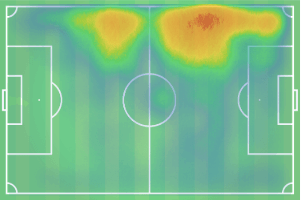
The versatility of Piatti’s positioning will make him a valuable asset to Greg Vanney, who utilised a variety of different formations and systems last season. Vanney has regularly utilised variants of a back three/five in the past during his time at Toronto FC, suggesting that Piatti’s versatility will be put to test during his time with the 2017 MLS Cup winners.
Dribbling and drawing fouls
Piatti is a proficient dribbler who likes to attack space at pace with the ball at his feet. When he receives the ball with his back to goal, he can quickly spin off his defender and explode into free space. Once he has space to run into, he isn’t afraid of taking on defenders 1v1.
Much like Sebastian Giovinco, Piatti has a small frame. Both the Italian and Argentine stand at just 5’4″. Their small size improves their centre of gravity, something that is evident when watching Piatti play. When tackled, he doesn’t always fall to the ground right away, managing to stay up with his great balance.
In the following example, we can see Piatti receive the ball with a defender right up his back. As the defender commits to pressing the Argentine, Piatti spins off the defender, following his first touch into the free space behind. From here he explodes forward, where he is eventually brought down.
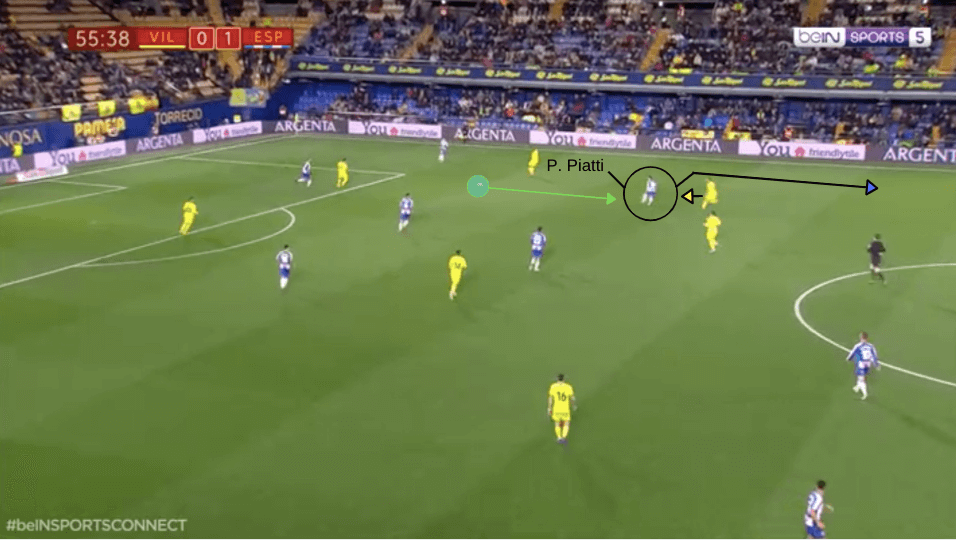
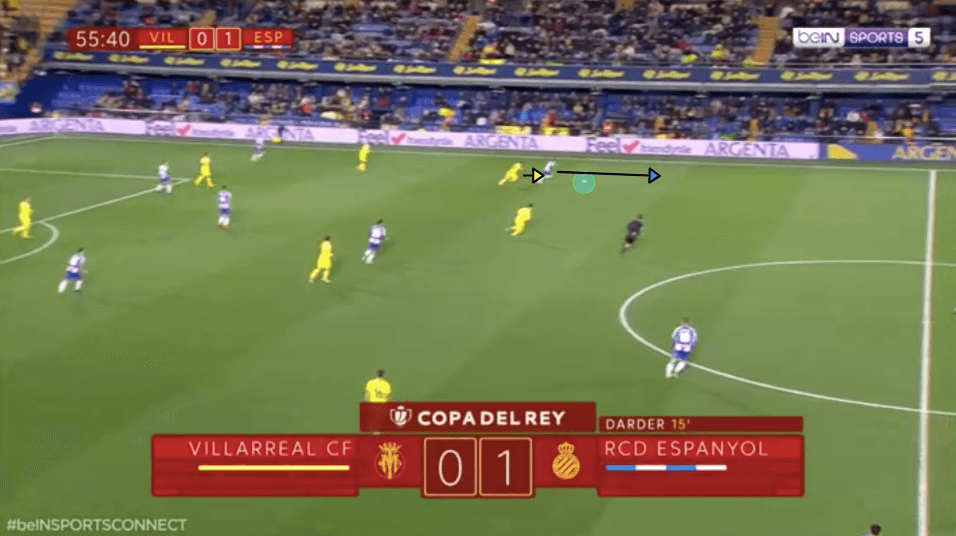
Piatti is fouled relatively often upon review of his highlights. In 2019/20 he averages 2.89 progressive runs per 90 minutes, while also averaging 2.89 fouls suffered per 90 minutes. His quick and silky feet make it difficult for defenders to win the ball off Piatti without fouling him.
Piatti’s quick feet help him escape tight situations where defenders are given an ultimatum between fouling him or letting him progress. In the following example, we can see Piatti wriggle past the Deportivo Alavés player.
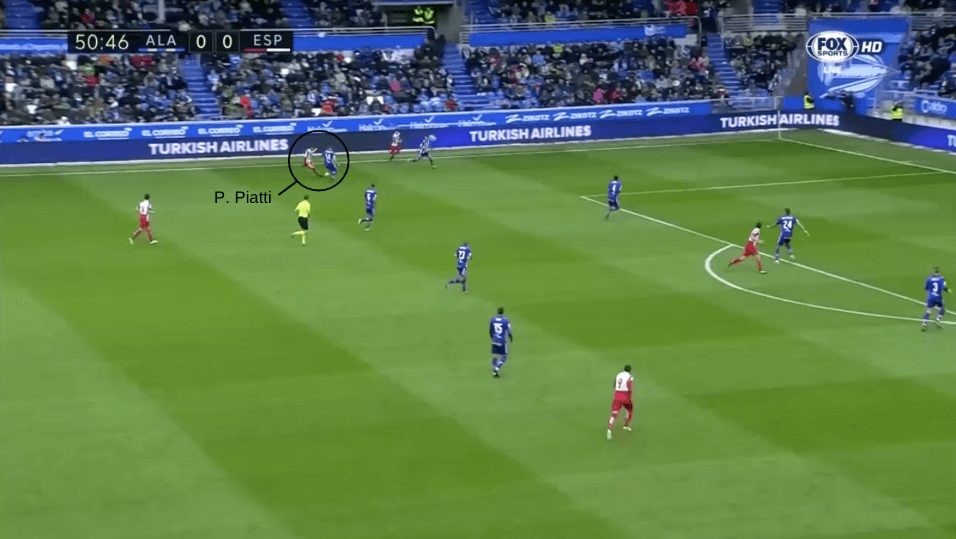
After beating his player, Piatti dribbles into the free space and puts a dangerous cross into the box for his teammate.
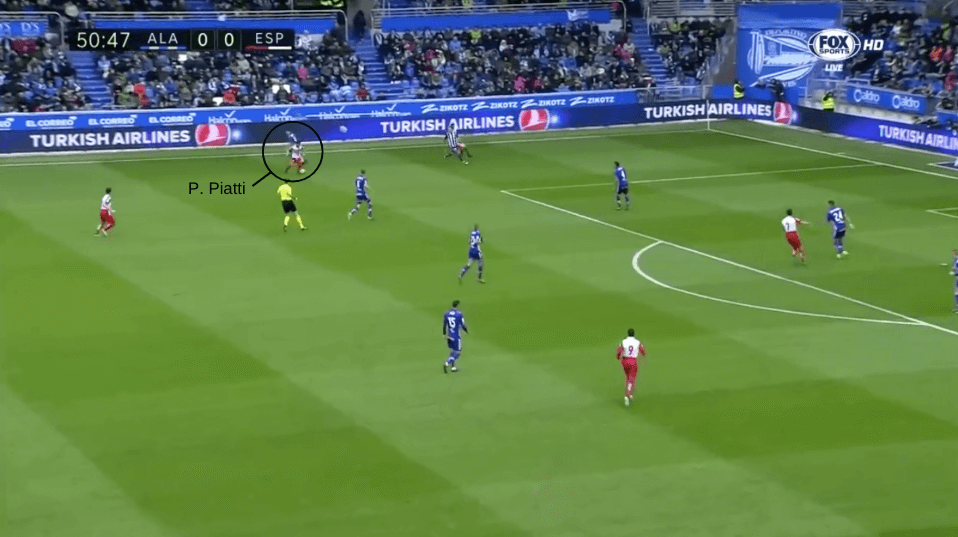
Piatti only averages 3.3 crosses per 90 minutes, with a 37.5% accuracy. However, this statistic could rise as the player moves to the MLS. Something tells me, however, that Vanney will be hoping to utilise the player’s dribbling ability more than his delivery into the box from wide areas.
Central play
While Piatti has regularly played on the left-hand side for Espanyol, he can be dangerous from central areas. When playing on the left side of a narrow front three, or as a left-attacking midfielder, Piatti can be utilised in the breaking of opposition lines.
In the following example, we can see Piatti playing against current MLS side FC Cincinnati. From a central location, he links up the play between the midfielders and centre-forward by dropping deep into the space to receive the ball.
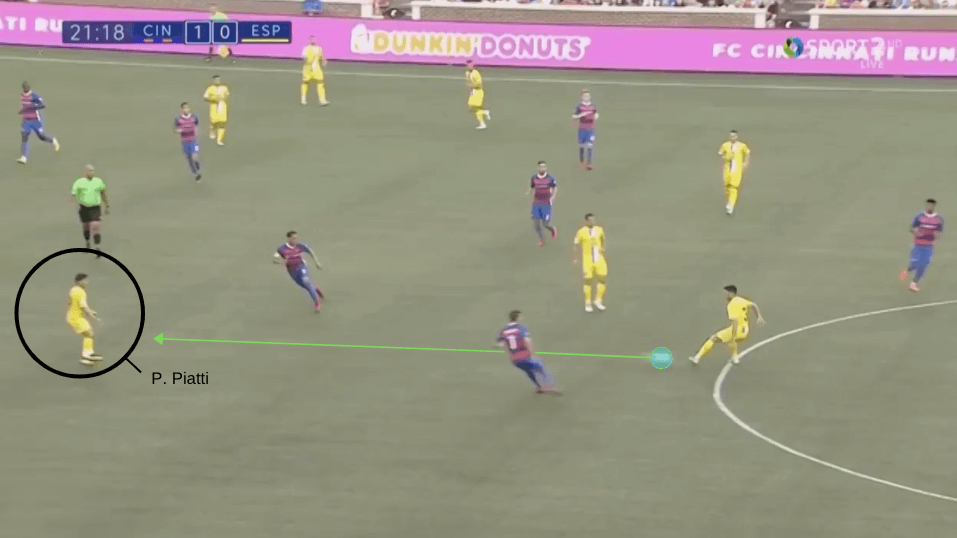
From here he looks to turn and play his teammate into space between the opposition lines, forcing a brilliant save out of the keeper.
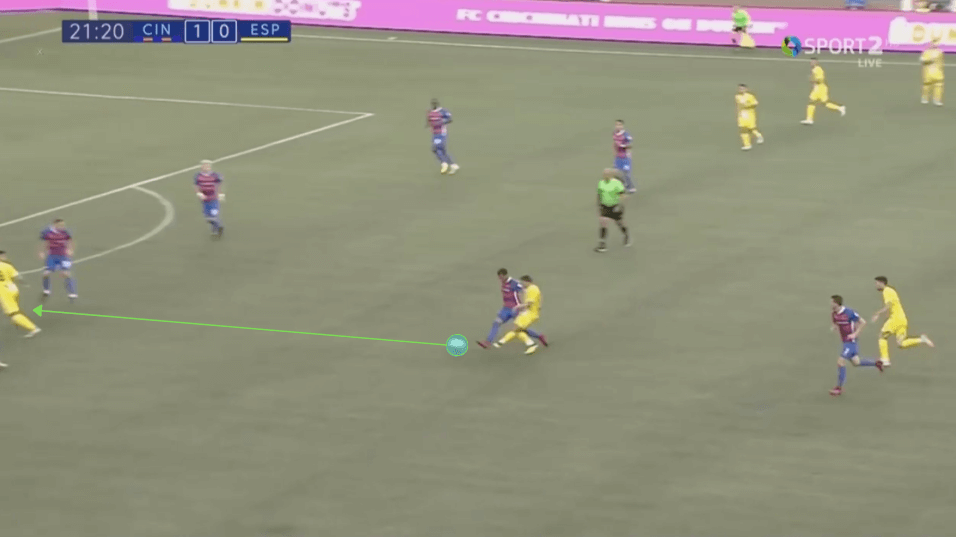
While he has shown his ability to dribble at opponents, he is also capable of quickly progressing the ball by linking up play between the lines.
But Piatti is also capable of exploding into the space behind opposition lines to get on the receiving end of passes as well. In the following example, Espanyol are playing in a UEFA Europa League match against CSKA Moscow. With the Espanyol in possession of the ball from a throw-in on the right side of the field, left-sided attacking-midfielder Piatti takes up a role more centrally.
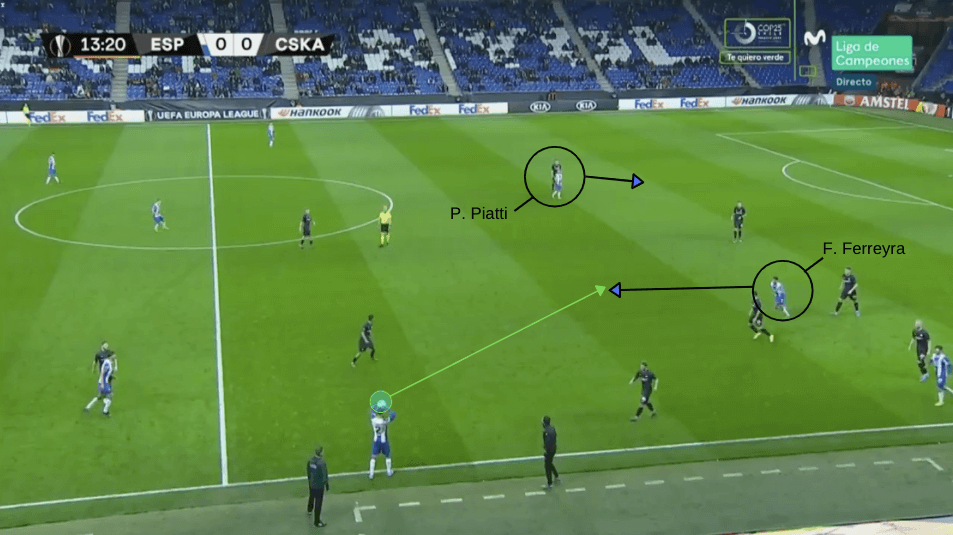
As the ball is played into Facundo Ferreyra, Piatti makes an angled run into the space behind the defenders. Ferreyra places a well-timed ball into the space for Piatti to run onto, leading to a dangerous chance at goal.
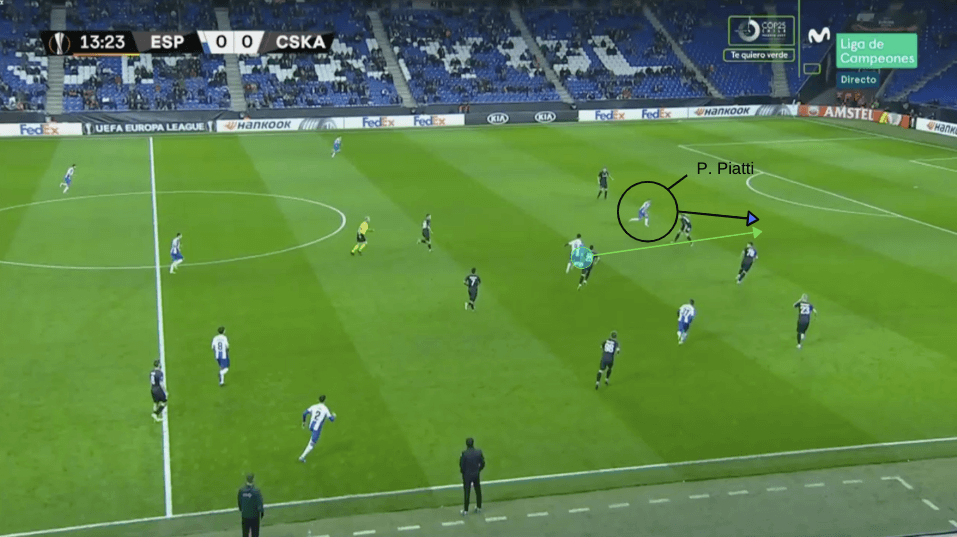
Both these examples show that, while Piatti is great at dribbling, he is also capable of linking up with teammates more centrally to progress the ball through opposition lines.
How he can fit into Toronto’s system
Until we know for sure how Greg Vanney plans on setting up his Toronto FC side this season, it is difficult to say for sure how Piatti will be used. As we mentioned before, Piatti has limited experience playing in a three/five at the back system. Should Vanney revert back to that style of play, Piatti could be asked to return to that role.
However, with the Canadian side bringing the Argentine in as a designated player, it would seem odd for him to be utilised in such an offensively limiting position. I would expect to see Vanney incorporate the player into a formation that gets him involved more centrally, linking up with Alejandro Pozuelo and Jozy Altidore.
However, Toronto FC fans would be wise not to expect a player that will replace Giovinco like-for-like. Despite the Italian and the Argentine sharing similarities in their size and dribbling ability, Piatti isn’t as clinical of a goal scorer.
He has scored 73 goals in 426 appearances during his career. He has assisted 68 as well. The player has played 294 games in La Liga in which he has scored 48 times and assisted 42. He averages a goal every 372 minutes in the league.
Coming to the MLS may see a spike in his goal-scoring numbers. Giovinco averaged a goal every 290 minutes during his time in the Serie A, before averaging a goal every 142 minutes in the MLS.
Only time will tell before we find out what Vanney’s plans for Piatti are. How he will fit into the grander scheme of things at Toronto FC all depends on Vanney’s tactics going forward.
Conclusion
This analysis and scout report has hopefully given Toronto FC and MLS fans a better indication of what to expect from the side’s newest designated player. His dribbling and linkup play in the middle of the field will be a big asset to the Reds.
He will bring a good balance between chance creation and goal-scoring while providing Greg Vanney with a versatile player capable of playing in multiple positions. But while he can play in positions out wide in a three/five at the back system, I expect to see him utilised much more advanced as a narrow left-sided attacker.





Comments